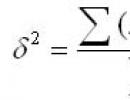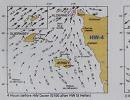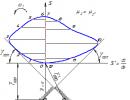Spare regiments go into battle
The 267th reserve rifle regiment was part of the 36th reserve rifle brigade. Write to TsAMO to check which unit it was sent to. Further search depending on the response received. 36 zsbr was stationed in Leningrad and its environs. It included: 48, 78, 267, 389 zsp, 4 zap. artillery regiment, as well as several battalions of convalescent and special companies (sapper, communications, chemical). Throughout the war, the brigade was engaged in the preparation of marching replacements for units of the Army in the Field, sending marching companies and teams to the formations of the Leningrad Front. 36 zsbr reported directly to the headquarters of the Lenfront. 2. TsAMO has a file of persons who passed through the reserve regiments and battalions of the 36th reserve rifle brigade, which was stationed in Leningrad. Before being wounded, Ivan Yakovlevich fought in the 1078th Infantry Regiment of the 314th Infantry Division. This division also fought near Leningrad. "At the end of September 1942, the unit was redeployed to the Volkhov Front, where it was subordinate to the 2nd Shock Army. The division launched counterattacks with the aim of deblocking those surrounded in the Sinyavino area during the course in Sinyavino offensive operation, inflicting counterattacks with the aim of deblocking the army formations surrounded in the Sinyavino region and restoring the front in the Gaitolovo region. In just two days of fighting in the Gaitolovo area, the division lost three thousand people killed and missing. As part of the 2nd shock army of the Volkhov Front, she participated in the offensive operation Iskra (14-30.01.1943). The division advanced on the extreme left flank of the offensive of the 2nd Shock Army in the Gaitolovo-Gontovaya Lipka area and did not advance far. During 1943, he was constantly fighting in the same area. "And he was treated in a Leningrad hospital. Type of medical institution: Evacuation hospital 1448 Location: Leningrad Location: Leningrad region The medical institution was in this area from 07/20/1942 to 01/15/1945 Additional information: engineering castle, l-d 11, p / box 159 On the website of the Feat of the people there is Bocharov Ivan Yakovlevich, senior sergeant-cook, awarded the medal "For the Defense of Leningrad" Commander 622 handed the medals rifle regiment 124 rifle division 10/12/1943. Here is the place of service after 36 zsbr. http://podvignaroda.mil.ru/filter/filterimage?path=Bn.. Here, using the medal, you can make a request to the award department of TsAMO and clarify whether this is your grandfather by the number of the medal. 142100, Moscow region, Podolsk, st. Kirova, 74 124 Rifle Division The division was formed on April 19, 1943 on the Leningrad Front on the basis of the following formations: the 56th Rifle Brigade, the 102nd Naval Rifle Brigade, the 138th Rifle Brigade and the 34th Ski Brigade. The formation took place in the Vsevolozhsk region Leningrad region in the area of Borisov Griva - Vaganovo. In addition, in August 1943, the division was replenished with two battalions of the 73rd Marine Rifle Brigade. In the active army: 04/29/1943 - 09/30/1944; 11/07/1944 - 11/30/1944; 12/05/1944 - 05/01/1945; 08/09/1945 - 09/03/1945. For two months she trained and served on the shores of Lake Ladoga. She took her first battle on August 13, 1943. During 1943, she fought at the junction with the 2nd Shock Army, including on the Sinyavin Heights. Here is the registration card of the Leningrad runway on Bocharov Ivan Yakovlevich http://www.obd-memorial.ru/memorial/fullimage?id=1006.. 001/006016/00002841_0.JPG 08/27/1943 he arrived at the LWPP, and departed on 08/28/1943 to the 4863 team. Here is the same comrade from 124 sd https://www.obd-memorial.ru/html/info.htm?id=100773287 Servicemen arrived at the Leningrad military transit point (after hospitals, stragglers from the unit, etc.), they were recruited into teams, depending on where they were sent, assigned a team number, appointed a senior and sent either to reserve regiments or immediately to the military unit . Team 1 1602 from LWPP to 36 ZSB, team 4863 from 36 ZSB to t.h. More precisely, it turns out to punch 4863, although Sharkov is in both. Yes exactly. And Sharkov also fought in the 622nd Infantry Regiment, but died in September 1943. There is a report in the OBD about the irretrievable losses of 622 sp https://www.obd-memorial.ru/html/search.htm?entity=00.. cn 10.1943&p=1 But Bocharova I.Ya. not among them. It is necessary to look at both reports and ck, sd, msb + eg in the area of \u200b\u200b124sd + distortion of fio bogarov. If nowhere, then only TsAMO. On the website Memory of the People, in the combat logs, the tasks and actions of the 124 SD are described in great detail, including. by divisions. The combat mission of 124 SD was the defense of the western coast of Lake Ladoga. The division started from the Vsevolozhsk region, in October it fought in the Kirov region. Many settlements are no longer on the map, some appear as tracts. One thing is clear that on October 12, 1943 Bocharov Ivan Yakovlevich was alive, because they were awarded the medal. And then you need to look at TsAMO reports on the losses of 124 rifle divisions. The kitchen was not right on the front line, somewhere in the rear of the regiment and the cook could die from an artillery shell or mortar. Mikhailovsky (former Engineering) Castle. In 1941-1945, a hospital was located here, where Ivan Yakovlevich was treated. https://ru.wikipedia.org/wiki/Mikhailovsky_Castle#/med.. MY MOTHER SAYS THAT THE LAST LETTER WAS SOMETHING ABOUT THE GROVE I LOOKED REALLY THERE IS A ROUND GROVE NOW A LOT OF EXcavations ARE GOING ON SO I WANT TO FIND AT LEAST SOME TRAIL HERE ON THE SINYAVSKIY HEIGHTS THERE ARE LISTS OF THE DEAD, probably Ivan, died, and here is the place where Kirovsky district. Sovkhoz Peatland on pre-war map, now it's gone. Here, somewhere in the region of the state farm Torfyannik, 622 joint ventures fought in October 1943. http://wikimapia.org/19868401/ru/Sovkhoz-Torfyanik-dovo.. If you believe the report of May 1948, then the last letter was in February 1943. In a report of 124 sd 10-19.10 intelligence is sent to the state farm Torfyannik. those. the task is to take it. From the combat log 124 sd
The researchers of the military history of Chuvashia, although not intentionally, nevertheless deprived their attention of the 14th reserve rifle Cheboksary brigade. The combat path of the 139th, 140th, 141st, 324th rifle divisions was devoted to many books, brochures and publications in the press. Streets are named in honor of these divisions, museums of military glory have been created. But about the 14th reserve rifle Cheboksary brigade (renamed a division in 1944), rarely in any reference publication on the history of the Armed Forces of the USSR and Russia you will see a couple of lines of information. Yes, and on the Internet there are only a few replicas of its correct name and possible location.
FORGOTTEN BRIGADE
Meanwhile, unlike the divisions listed above, the 14th Rifle Reserve was deployed in the republic not for 2-3 months, but for 2.5 (!) Years. And this is the only military unit in the history of the USSR that bore the official name "Cheboksary". In the 14th, not 10-11 thousand recruits were dressed in military uniforms, but dozens of times more.
Let the word “reserve” not confuse readers - many soldiers at the front admitted that they had a much harder time in the reserve regiment. And these difficulties (according to the principle “hard to learn - easy to fight”) then helped the fighters survive and emerge victorious from the most difficult battles.
The gap regarding the 14th reserve rifle brigade, of course, must be filled. And for several years now, the search club "Nabat" of the Cheboksary school No. 57 has been researching the history of this brigade.
ON THE SECOND DAY OF THE WAR
Each state has a carefully developed mobilization plan in case of war with a potential enemy. By 1941, the Soviet Union also had such a plan. In accordance with the mobplan kept in the Tula Regional Military Commissariat, the formation of the 14th reserve rifle brigade and the recruitment of the male population from the regions of the Moscow Military District were started. To clarify: from 1935 until November 1941, our republic was part of the Volga-Ural Military District (and only then became part of the Moscow Military District), therefore, in the initial period of the existence of the brigade, there were not so many of our countrymen in its composition.
Already on the second day of the war, June 23, the 14th reserve rifle brigade was organized as part of the 1st reserve rifle regiment (ZSP), 95th ZSP, 58th ZSP, 7th reserve artillery regiment (ZAP), 47 th separate communications battalion and the 39th separate sapper battalion. The brigade and regiments were deployed in the Tula region in the cities of Belev, Efremov, Tula and in the Tesnitsky camps, Serpukhov, Moscow region.
But the front was fast approaching. And on October 8, 1941, the 14th reserve rifle brigade received an order - the regiments to withdraw (the defense in their place was occupied by regular units of the Red Army). And on October 13, 1941, the relocation of the brigade with all the regiments to the Chuvash ASSR began. 
 FATHERS-COMMANDERS
FATHERS-COMMANDERS
The brigade, no doubt, was lucky with the commanders. Usually, it was precisely these soldiers at the front who called “dad”: he would take off three skins during the exercises, but he would do everything to keep the soldier alive in battle.
Let's start, as expected, from the head, from the brigade commander. Iosif Nikitich (so in the service record, he is presented as Nikitovich in award documents) Makarov, a native of the Gdovsky district of the Pskov (now Leningrad) region, managed to serve in the tsarist army as a junior non-commissioned officer of the Life Guards Volyn regiment. Moreover, the soldiers themselves chose him for this position.
In the Civil War, the future division commander fights on the northwestern and southern fronts. In 1918, a 22-year-old guy, a platoon commander of the 1st Gdov Soviet company, was accepted as a member of the CPSU (b). Colonel Makarov met the Great Patriotic War in the position of head of the Novograd-Volyn Infantry School.
In November 1941, an experienced officer was sent to Cheboksary to organize the work of the 14th reserve rifle brigade. Almost two years before his appointment, in July 1943, as the commander of a separate officer brigade of the Moscow Military District, Iosif Nikitich devoted himself to the formation of a full-fledged 14th reserve rifle brigade and the preparation of marching companies for the front. 
 “... He manages the combat and political training of the brigade well, investing a lot of work and energy in it, hard work and skillful leadership brought the brigade to one of the first places in the district, the marching reinforcements sent by the brigade were prepared to perform combat missions. For the great work done in building up the brigade and the good preparation of reinforcements for the front, Comrade Makarov is worthy of being awarded the Order of the Red Star, ”you can read in the award list for Colonel Makarov. However, this was not the only award of Joseph Makarov - by the end of the war, his chest, along with many medals, was decorated with two Orders of the Red Star and the Order of Lenin.
“... He manages the combat and political training of the brigade well, investing a lot of work and energy in it, hard work and skillful leadership brought the brigade to one of the first places in the district, the marching reinforcements sent by the brigade were prepared to perform combat missions. For the great work done in building up the brigade and the good preparation of reinforcements for the front, Comrade Makarov is worthy of being awarded the Order of the Red Star, ”you can read in the award list for Colonel Makarov. However, this was not the only award of Joseph Makarov - by the end of the war, his chest, along with many medals, was decorated with two Orders of the Red Star and the Order of Lenin.
Colonel Makarov as commander of the 14th ZSBR was replaced by a native of the Voronezh region, Lieutenant Colonel Mikhail Vasilyevich Reshetnikov. And behind him is the Civil War. Before his appointment to the brigade, Lieutenant Colonel Reshetnikov managed to fight the Nazis as commander of the 17th Infantry Regiment of the 32nd Infantry Division, commanded a reserve cadet regiment. After a five-month probationary period, on December 29, 1943, Lieutenant Colonel Reshetnikov was appointed commander of the 14th ZSBr. It was under Reshetnikov that the brigade was given the name "14th Cheboksary Reserve Rifle Brigade". Under him, the brigade was also renamed into a division. In the reserve, Colonel Reshetnikov (he received a promotion in May 1945) was fired under Art. 43 (by age) in May 1947 with distinctive signs on shoulder straps and with the right to wear military uniform.
TO KANASH ON FOOT, TO CHEBOKSARY BY BARGE
The relocation of the 14th ZSBR to Chuvashia was quite unexpected for the republic. The regiments of the brigade had been moving towards Chuvashia for the second week, when the Council of People's Commissars of the republic and the regional committee of the All-Union Communist Party of Bolsheviks finally considered the issue of placing the formation. This was partly due to the fact that until November 25, 1941, Chuvashia was not part of the Moscow Military District.
Of course, for such a small republic as ours, the appearance of a reserve rifle brigade in addition to the emerging military units was a big burden. In order for the reader to understand the quantitative composition of the brigade, I will give only the total number of surnames from the alphabetical book of officers of the brigade - 2988. Of course, they did not serve at the same time, but still. In Cheboksary, to accommodate the brigade (its administration and the 95th ZSP), premises assigned to the emerging 324th rifle division were allocated: the educational building of the agricultural institute and its dormitories on the street. K. Marx and Sovkhoznaya, the building and dormitory of the obstetric school, the educational building and dormitories of the Theater School, the dormitory of the pedagogical school, the building of the Musical College with dormitories, the building and dormitory of the construction technical school, the building of the Law School ...
By the way, it was originally planned to place the 58th reserve rifle regiment in Cheboksary. On October 13-14, 1941, this regiment received an order to redeploy and on October 23 it was delivered to Cheboksary by rail. Here the organizational formation of the regiment began with replenishment from among the commanding officers and privates. But the regiment did not manage to gain a foothold in Cheboksary - they had to vacate the already occupied premises for the brigade management that arrived in the city. And the 58th ZSP was redeployed to Kanash and adjacent areas. One can only imagine how the fighters swore as they stomped through the autumn frost to Kanash. “They could have landed there right away,” everyone thought ...
Not without incident, the 95th reserve rifle regiment, which was also part of the brigade, reached the republic. It was formed already on the third day of the war in the city of Efremov, Tula Region, on the basis of the 388th Infantry Regiment of the 172nd Infantry Division, which had gone to the front. On October 12, the regiment, consisting of 13 thousand fighters and commanders with all materiel, began redeployment to the Chuvash Autonomous Soviet Socialist Republic along the route Efremov - Zaraisk - Orekhovo-Zuyevo - Vladimir - Gorky.
In Gorky, the regiment was loaded onto barges for further movement along the Volga. But because of the early freeze-up, we had to unload in Vasilsursk and move on on foot through Yadrin. In total, the regiment covered more than 1200 km of the road and only by November 21 was quartered in the villages of the Urmar and Kozlovsky districts.
Only in May 1942, after the formed divisions left for the front and the establishment of a normal life and food for the remaining units, the regiment was redeployed to Cheboksary with accommodation in a field camp on the left bank of the Volga. In May 1944, the regiment was relocated to the city of Kalinin.
STUDY FOR THE FRONT
The structural units of the reserve rifle division were located not only in Cheboksary and Kanash. They were also based in Vurnary, Kugesy, Tsivilsk ... The brigade carried out targeted training of conscripts in various military specialties. The training period was a maximum of six months, then the fighters as part of marching companies were sent to the front.
Already in the first year of the brigade's stay in Chuvashia, more than 170,000 fighters were trained and sent to the front as part of marching reinforcements. In addition, junior lieutenants have been trained in the brigade since 1941. In fact, the brigade also served as an ordinary military school.
The fighters trained by the brigade fought with honor at the front. One of these valiant warriors is Stepan Illarionov, Hero of the Soviet Union, from the village of Kivsert-Yanishevo, Vurnarsky District, who became famous as part of the 158th Infantry Regiment of the 51st Infantry Division of the 1st Baltic Front….
(To be continued)
Evgeny SHUMILOV,
chairman of the regional council
OOD "Search movement of Russia"
Photo from the funds of the Central
archive of the Ministry of Defense of the Russian Federation and from the site: sovinformburo.com
MAIN MILESTONES IN THE HISTORY OF THE 14th RESERVE FIRE BRIGADE
November 5, 1941 "The brigade and regiments launched work at a new location in the Chuvash Autonomous Soviet Socialist Republic" (from the Historical Form of the 14th Reserve Rifle Brigade). The basis is the order for the brigade No. 158 dated 10/13/1941.
January 1942 The brigade moved to new states. An additional 359th reserve rifle regiment, 47th separate communications company (transformed from a battalion), a separate chemical intelligence company, and 58th reserve rifle regiment were formed.
February 1943 By order of the People's Commissar of Defense of the USSR No. 90 of February 19, 1943 and the directive of the Moscow Military District of February 22-24, 1943, the brigade was given the name "14th Cheboksary Reserve Rifle Brigade"
July 1943 A separate anti-tank artillery battalion was formed.
September 1943 The 18th separate penal battalion was formed.
April - May 1944 The 14th reserve rifle Cheboksary brigade was relocated to the city of Kalinin and the Kalinin region.
From May 6 to May 10, 1944, all regiments of the brigade received regimental colors.
On May 30, 1944, the 14th Cheboksary Reserve Rifle Brigade was renamed the 14th Cheboksary Reserve Rifle Division. The basis is the order of the People's Commissar of Defense No. 71 of May 1, 1944 and the directive of the Military Council of the Moscow Military District No. 18242 of May 30, 1944.
On May 31, 1946, the 14th Cheboksary Reserve Rifle Division and its regiments were completely disbanded.
To Ilputa Vasily Ilyich - reconnaissance platoon of foot reconnaissance of the 137th Guards Rifle Regiment (47th Guards Rifle Division, 8th Guards Army, 1st Belorussian Front) Guards Junior Sergeant - at the time of presentation for awarding the Order of Glory 1st degree.
Born on February 25, 1918 in the village of Dinskaya, now Dinskoy district Krasnodar Territory in a peasant family. Russian. Graduated from 4 classes. In 1936 he graduated from the courses of tractor drivers, before being drafted into the army he worked as a tractor driver at the machine and tractor station of the Dinsky district.
In November 1939 he was drafted into the Red Army by the Plastunovsky District Military Commissariat of the Krasnodar Territory. He served in the city of Vitebsk, in the 56th Corps Artillery Regiment as the commander of the traction department.
Since June 1941, as part of his regiment, he participated in battles with invaders near the city of Grodno. Two months later, in August, he was taken prisoner. He was held in concentration camp No. 11 in the city of Molodechno (Belarus). In December 1943, while being transported to Germany, he fled.
In January 1944, he crossed the front line in the offensive zone of the 8th Guards Army. The 149th Army Reserve Rifle Regiment was sent, and after passing the check - to the 137th Guards Rifle Regiment of the 47th Guards Rifle Division. As part of this unit, he passed until the end of the war.
August 1-3, 1944 in the battle for locality Studzianka (north-east of the city of Radom, Poland) of the Red Army guard Kilput was among the first to break into an enemy stronghold, hit over 10 soldiers.
P By order of the commander of the 47th Guards Rifle Division (No. 93 / n) of August 26, 1944, the Red Army soldier Vasily Ilyich Kilputa awarded the order Glory 3rd degree (No. 126546).
In February 1945, junior sergeant Vasily Ilyich of Kilput, as part of a group of machine gunners, crossed the Oder River near the city of Kustrin (now the city of Kostrzyn, Poland), penetrated behind enemy lines and established the location of his firing points and the infantry concentration area. In the ensuing battle, he defeated several Nazis, and reported information about the enemy to the command in a timely manner. In subsequent battles on the bridgehead, he exterminated 12 enemy soldiers, captured a non-commissioned officer.
P By order of the troops of the 8th Guards Army (No. 498 / n) of February 27, 1945, Junior Sergeant Vasily Ilyich of Kilput was awarded the Order of Glory 2nd degree (No. 25390).
In May 1945, in the battle for the city of Berlin, Junior Sergeant Kilputa was one of the first to cross the Spree River, identify the positions of the enemy's mortar and anti-aircraft batteries, and transmit their coordinates to the headquarters. In a street fight, he destroyed four Faustniks, suppressed a heavy machine gun, and exterminated a group of submachine gunners. He was wounded, but remained in the ranks.
In October 1945, the guard foreman Kilput was demobilized. He returned to his homeland in Stavropol.
At By order of the Presidium of the Supreme Soviet of the USSR on May 15, 1946, for courage, courage and fearlessness shown in battles with the Nazi invaders at the final stage of the war, Guards Junior Sergeant Vasily Ilyich of Kilput was awarded the Order of Glory 1st degree (No. 2943). He became a full cavalier of the Order of Glory.
Lived in the village of Dinskaya. He worked as a tractor driver on the Oktyabr collective farm, as a plumber at a utility plant, and as a salesman in a department store in the village of Dinskaya. Since 1978 - retired. Died December 29, 1993. He was buried in the cemetery of the village of Dinskaya.
Awarded with orders Patriotic War 1st degree, Glory 3rd degree, medals, including "For Courage" (08/14/1944).


 “... He manages the combat and political training of the brigade well, investing a lot of work and energy in it, hard work and skillful leadership brought the brigade to one of the first places in the district, the marching reinforcements sent by the brigade were prepared to perform combat missions. For the great work done in building up the brigade and the good preparation of reinforcements for the front, Comrade Makarov is worthy of being awarded the Order of the Red Star, ”you can read in the award list for Colonel Makarov. However, this was not the only award of Joseph Makarov - by the end of the war, his chest, along with many medals, was decorated with two Orders of the Red Star and the Order of Lenin.
“... He manages the combat and political training of the brigade well, investing a lot of work and energy in it, hard work and skillful leadership brought the brigade to one of the first places in the district, the marching reinforcements sent by the brigade were prepared to perform combat missions. For the great work done in building up the brigade and the good preparation of reinforcements for the front, Comrade Makarov is worthy of being awarded the Order of the Red Star, ”you can read in the award list for Colonel Makarov. However, this was not the only award of Joseph Makarov - by the end of the war, his chest, along with many medals, was decorated with two Orders of the Red Star and the Order of Lenin. 



